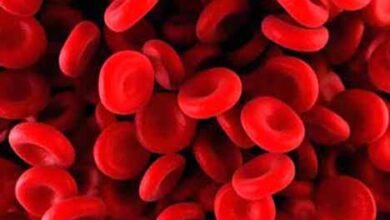
कवक या फफूंद एक प्रकार का जीव होता है जो अपना भोजन सड़े गले मृत कार्बनिक पदार्थों से प्राप्त करते हैं. कवक का अध्ययन माइकोलॉजी (Mycology) कहलाता है. यह हरितलवक (Chlorophyll) रहित, संकेन्द्रीय (Nucleated), संवहन ऊतक रहित (Non-vascular) थैलोफाइटा (Thallophytic) है. पर्णहरित विहीन होने के कारण कवक अपना भोजन स्वयं नहीं बना पाते हैं. ये विविधपोषी (Heterotrophic) होते हैं. इनकी कोशिका भित्ति (Cell wall) काइटिन (Chitin) की बनी होती है. इसमें संचित भोजन ग्लाइकोजेन (Glycogen) के रूप में रहता है. इसका सबसे बड़ा कार्य संसार में अपमार्जक के रूप में कार्य करना होता है. कवक संसार में उन सभी भागों में पाए जाते हैं जहाँ जीवित अथवा मृत कार्बनिक पदार्थ पाए जाते हैं. जैसे :- गोबर पर उगने वाले कवक को कोप्रोफिलस कवक (Coprophilous fungi) कहा जाता है. नाखूनों तथा बालों में उगने वाले कवकों को किरेटिनोफिलिक (Keratinophilic) कहते हैं.
पोषण के आधार पर कवक तीन प्रकार के होते हैं…
- सहजीवी (symbiotic) :- ऐसे कवक दूसरे पौधों के साथ-साथ उगते हैं तथा एक-दूसरे को लाभ पहुँचाते हैं. जैसे = लाइकोन (Lichen).
- परजीवी (Parasitic) :- ऐसे कवक अपना भोजन जन्तुओं एवं पौधों के जीवित ऊतकों से प्राप्त करते हैं. ऐसे कवक सदैव हानिकारक होते हैं. जैसे = पक्सिनिया (Puccinia), अस्टिलागो (Ustilago).
- मृतोपजीवी (saprophyte) :- इस प्रकार के कवक अपना भोजन सदैव सड़े-गले कार्बनिक पदार्थों से प्राप्त करते हैं. जैसे = राइजोपस (Rhizopus), पेनिसिलिय (Penicillium), मोर्चेला (Morchella).
यीस्ट (Yeast) :- यह एक एककोशिकीय मृतोपजीवी कवक है जिसमें क्लोरोफिल (Chlorophyll) नहीं पाया जाता है. इस कारण ये भी अपना भोजन स्वयं नहीं बना सकता हैं. इसकी खोज सबसे पहले “एन्टोनीबॉन ल्यूवेनहॉक (Antonib Leuwenhock)” ने लगाया था. मुख्यतः इसका उपयोग एल्कोहॉल, बियर, शराब तथा डबलरोटी बनाने में किया जाता है. यीस्ट के किण्वन (Fermentation) सम्बन्धी गुणों का पता सबसे पहले “लुई पाश्चर (Louis Pasteur)” ने लगाया था.
आर्थिक महत्व…
- वर्ज्य (Taboos) कार्बनिक पदार्थों का नाश करना कवकों का मुख्य लक्षण होता है. ये जन्तुओं एवं पौधों के अवशेषों को विघटित (Decompose) कर देते हैं.
- एगरिकस छत्रक (Agaricus), गुच्छी (Morchella) आदि कवकों का उपयोग सब्जी के रूप में किया जाता है.
- एस्पर्जिलस (Aspergillus), पेनीसीलियम (PeniciIlium) जैसे कवकों का उपयोग पनीर उद्योग में होता है.
- यीस्ट (Yeast) का उपयोग अल्कोहल उद्योग (Alcohol industry) में किया जाता है.
- कुछ यीस्ट जैसे सैकरोमाइसीज सेरविसी (Saccharomyces cervisiae) का उपयोग बेकरी उद्योग में डबलरोटी बनाने में किया जाता है.
- कवकों द्वारा कई प्रकार के अम्लों का निर्माण किया जाता है. एस्पर्जिलस, म्यूकर तथा साइट्रोमाइसीज द्वारा साइट्रिक अम्ल (Citric acid) का निर्माण किया जाता है. एस्पर्जिलस गेलोमाइसीज (Aspergillous gallomyces) तथा पेनिसीलियम ग्लाउकम (Penicillium glaucum) द्वारा गैलिक अम्ल (Gallic acid) प्राप्त किया जाता है. एस्पर्जिलस नाइजर (Aspergillus niger) द्वारा ग्लूकोनिक अम्ल (Gluconic acid) तथा राइजोपस निग्रिकेन्स (Rhizopus nigricans) द्वारा फ्युमेरिक अम्ल (Fumaric acid) प्राप्त किया जाता है.
- कवकों से कई प्रकार के एन्जाइम (Enzyme) प्राप्त किए जाते हैं. एस्पर्जिलस ओराइजी (Aspergillus oryzae) से एमाइलेज (Amylase), यीस्ट (yeast) से इन्वर्टेज (Invertase) तथा पेनीसीलियम से पेक्टिनेज (Pectinase) एन्जाइम प्राप्त किए जाते हैं.
- कवकों से कई प्रकार के विटामिनों का संश्लेषण (synthesis) किया जाता है. जैसे- स्ट्रेप्टोमाइसीज ग्रिसियस (Streptomycin griceus) नमक कवक से विटामिन B12 (Cyanocobalamin), यीस्ट (yeast) से विटामिन D (अर्गेस्टेराल) तथा असविया गोसीपी (Ashbya gossypi) द्वारा विटामिन B12 (Riboflavin) का संश्लेषण किया जाता है.
- कवकों से कई प्रकार के एन्टीबायोटिक औषधियों का निर्माण किया जाता है. वर्ष 1927 ई. में अलेक्जेंडर फ्लेमिंग ने PeniciIIium notaturn से पेनीसीलिन (Penicillin) नामक एन्टीबायोटिक प्राप्त किया था. क्लोरोमाइसीटीन (Chloromycetin), नीयोमाइसीन (Neomycin), स्ट्रेप्टोमाइसीन (streptomycin), टेरामाइसीन (Terramycin) आदि एन्टीबायोटिक औषधियाँ कवकों से ही प्राप्त किए जाते हैं.
- कुछ कवक कीड़े-मकोड़ों द्वारा रोग फैलाने में नियंत्रण के काम में आते हैं.
हानिकारक क्रियाएँ…
- राइजोपस, पेनीसीलियम आदि की कई जातियाँ भोजन को नष्ट कर देती हैं.
- दैनिक जीवन में उपयोग में आनेवाले कई प्रकार की वस्तुओं जैसे-कपड़ा, चमड़े, कागज, लकड़ी आदि को कवक नष्ट कर देते हैं.
- पौधों में होनेवाले कई प्रकार के रोगों के लिए कवक मुख्य रूप से उत्तरदायी होते हैं। सरसों का सफ़ेद किट्ट रोग, मूंगफली का टिक्का रोग, आलू का उत्तरभावी अंगमारी रोग, गन्ने का लाल सड़न रोग, चने का विल्ट रोग, सेब के फल का सड़ना, बाजरे का अर्गोट, गेहूँ का लाल रस्ट, आदि पादप रोग विभिन्न प्रकार के कवकों द्वारा होते हैं.
- कवक जन्तुओं में भी कई प्रकार के रोग उत्पन्न करते हैं. मानव में होने वाले एस्पर्जिलेसिस (फेफड़े का रोग), दाद (Ringvvorm), मेनिनजाइटिस (Meningitis), ओनीको माइकोसिस (नाखूनों का भूरापन होना), हिप्टोप्लाज्मोसिस (Hyptoplasmosis) आदि रोग कवकों द्वारा ही होते हैं. इसी प्रकार पशुओं में होने वाले एपलटेफुट, एस्पर्जिलोसिस, म्यूकरो माइकोसिस आदि रोग कवक द्वारा ही उत्पन्न होते हैं.
- कुछ कवक जो निमेटोड (Nematods) का भक्षण करते हैं, प्रीडीसियस कवक (Predaceous fungi) कहलाते हैं.
- राइजोपास (Rhizopus) को Bread mould अथवा Pin mold तथा एस्पर्जिलस को Blue mold कहते हैं.
- किण्वन की क्रिया में यीस्ट द्वारा इथाइल ऐल्कोहॉल तथा कार्बन डाइऑक्साइड उत्पन्न होती है। यह कार्बन डाइऑक्साइड ठोस अवस्था में dry ice के नाम से बेचे जाते हैं.
- एफ्लाटॉक्सिन (Aflatoxin) नामक पदार्थ एस्पर्जिलस फ्लैव्स (Aspergilius flavus) नामक कवक से प्राप्त किया जाता है जो कि विषैला (Poisonous) होता है.
- एरगॉट (Ergot) क्लेवीसेप्स परपुरिया (Cleviceps purepurea) से प्राप्त किया जाता है, जो गर्भाशय के संकुचन के काम आता है.
- LSD (Lysergic acid diethylamide) एक विभ्रमी (Hallucinogenic) पदार्थ है, जो क्लाविस्प्स पेपुराई नामक कवक से प्राप्त किया जाता है.
- एफ्लाटाक्सिन नामक पदार्थ पालतू पशुओं के लिए हानिकारक होता है.
डॉ. (प्रो.) अमरेंद्र कुमार.
========= ========= =========
Fungi…

Fungi are a type of organism which obtains their food from rotten dead organic matter. The study of fungi is called Mycology. It is a chlorophyll-free, nucleated, non-vascular Thallophytic. Due to being devoid of chlorophyll, fungi are not able to make their own food. These are heterotrophic. Their cell wall is made of chitin. The food stored in it remains in the form of glycogen. Its biggest function is to act as a scavenger in the world. Fungi are found in all parts of the world where living or dead organic matter is found. For example:- Fungi growing on cow dung are called coprophilous fungi. Fungi growing in nails and hair are called keratinophilic.
On the basis of nutrition, there are three types of fungi…
- Symbiotic:- Such fungi grow along with other plants and benefit each other. Like = Lichen.
- Parasitic:- Such fungi obtain their food from the living tissues of animals and plants. Such fungi are always harmful. Like = Paxinia, Astilago.
- Saprophyte:- This type of fungus always obtains its food from rotten organic matter. Like = Rhizopus, Penicillium, Morchella.
- Yeast: – It is a unicellular saprophytic fungus in which chlorophyll is not found. For this reason they also cannot prepare their own food. It was first discovered by “ Antonie Van Leeuwenhoek”. Mainly it is used in making alcohol, beer, wine and bread. The fermentation related properties of yeast were first discovered by “Louis Pasteur”.
Economic importance…
- Taboos: Destroying organic matter is the main characteristic of fungi. They decompose the remains of animals and plants.
- Fungi like Agaricus, Morchella etc. are used as vegetables.
- Fungi like Aspergillus, Penicillium are used in cheese industry.
- Yeast is used in alcohol industry.
- Some yeast like Saccharomyces cervisiae are used in the bakery industry to make bread.
- Many types of acids are produced by fungi. Citric acid is produced by Aspergillus, Mucor and Citromyces. Gallic acid is obtained from Aspergillus gallomyces and Penicillium glaucum. Gluconic acid is obtained by Aspergillus niger and Fumaric acid is obtained by Rhizopus nigricans.
- Many types of enzymes are obtained from fungi. Amylase is obtained from Aspergillus oryzae, Invertase from yeast and Pectinase from Penicillium.
- Many types of vitamins are synthesized from fungi. For example, Vitamin B12 (Cyanocobalamin) is synthesized from Streptomyces griseus, Vitamin D (Argestrel) from yeast and Vitamin B12 (Riboflavin) is synthesized from Ashbya gossypi.
- Many types of antibiotic medicines are manufactured from fungi. In the year 1927, Alexander Fleming obtained an antibiotic called Penicillin from Penicillium notaturn. Antibiotic medicines like Chloromycetin, Neomycin, Streptomycin, Terramycin etc. are obtained from fungi.
- Some fungi are used to control the spread of diseases by insects.
Harmful actions…
- Many species of Rhizopus, Penicillium etc. destroy food.
- Fungi destroy many types of items used in daily life like cloth, leather, paper, wood etc.
- Fungi are mainly responsible for many types of diseases occurring in plants. White rust disease of mustard, Tikka disease of groundnut, late blight disease of potato, red rot disease of sugarcane, wilt disease of gram, rot of apple fruit, ergot of millet, red rust of wheat, etc. Plant diseases are caused by different types of fungi. Are by.
- Fungi also cause many types of diseases in animals. Human diseases like aspergillosis (lung disease), ringworm, meningitis, onychomycosis (browning of nails), hypoplasmosis etc. are caused by fungi only. Similarly, diseases like apple foot, aspergillosis, mucro mycosis etc. in animals are caused by fungi only.
- Some fungi which feed on nematodes are called predaceous fungi.
- Rhizopus is called bread mold or pin mold and Aspergillus is called blue mold.
- In the process of fermentation, yeast produces ethyl alcohol and carbon dioxide. This carbon dioxide is sold in solid state under the name of dry ice.
- A substance called Aflatoxin is obtained from a fungus called Aspergilius flavus which is poisonous.
- Ergot is obtained from Cleviceps purepurea, which helps in contraction of the uterus.
- LSD (Lysergic acid diethylamide) is a hallucinogenic substance, which is obtained from a fungus called Claviceps purpurea. A substance called aflatoxin is harmful for pets.
Dr. (Prof.) Amarendra Kumar.





